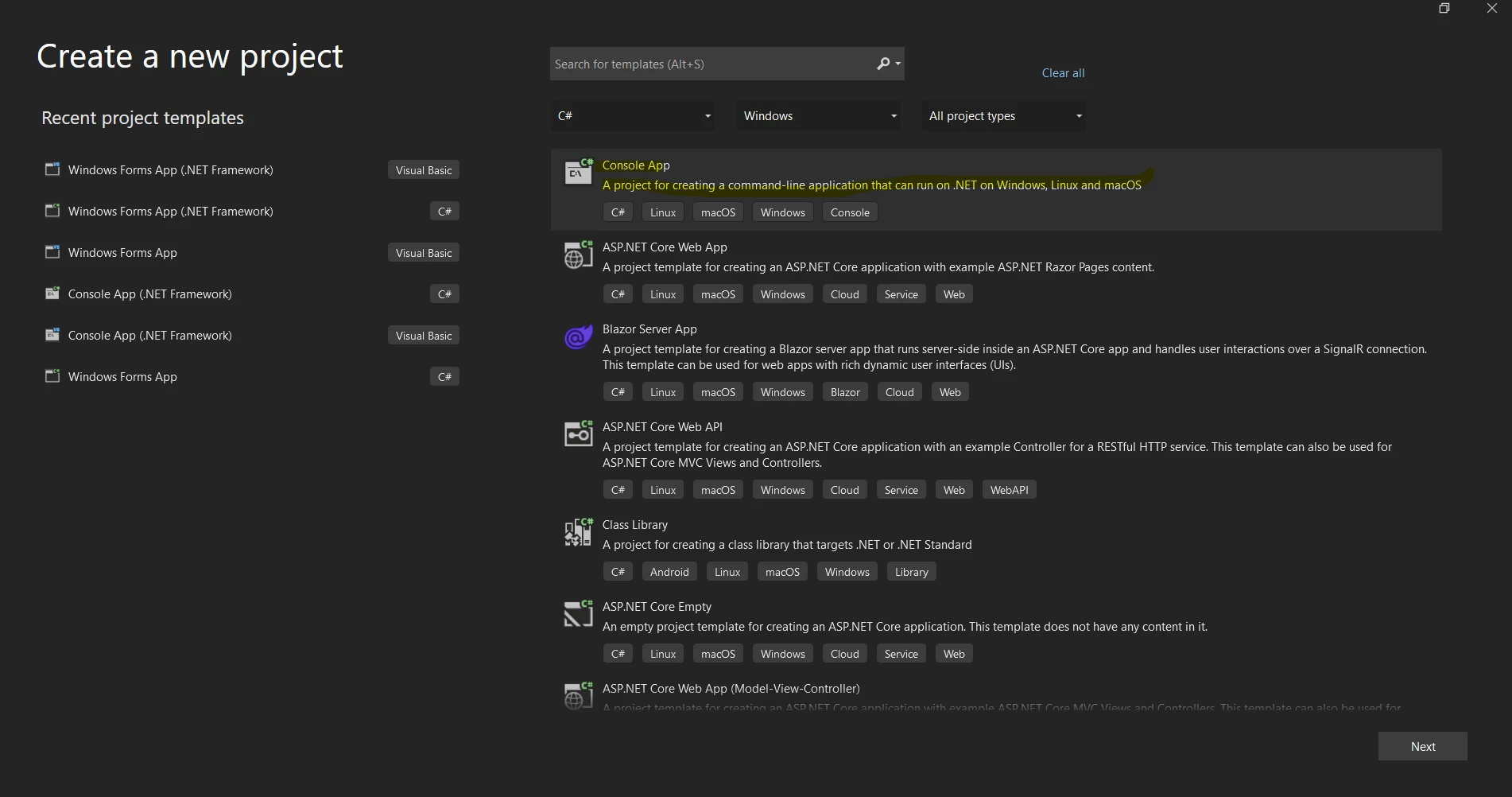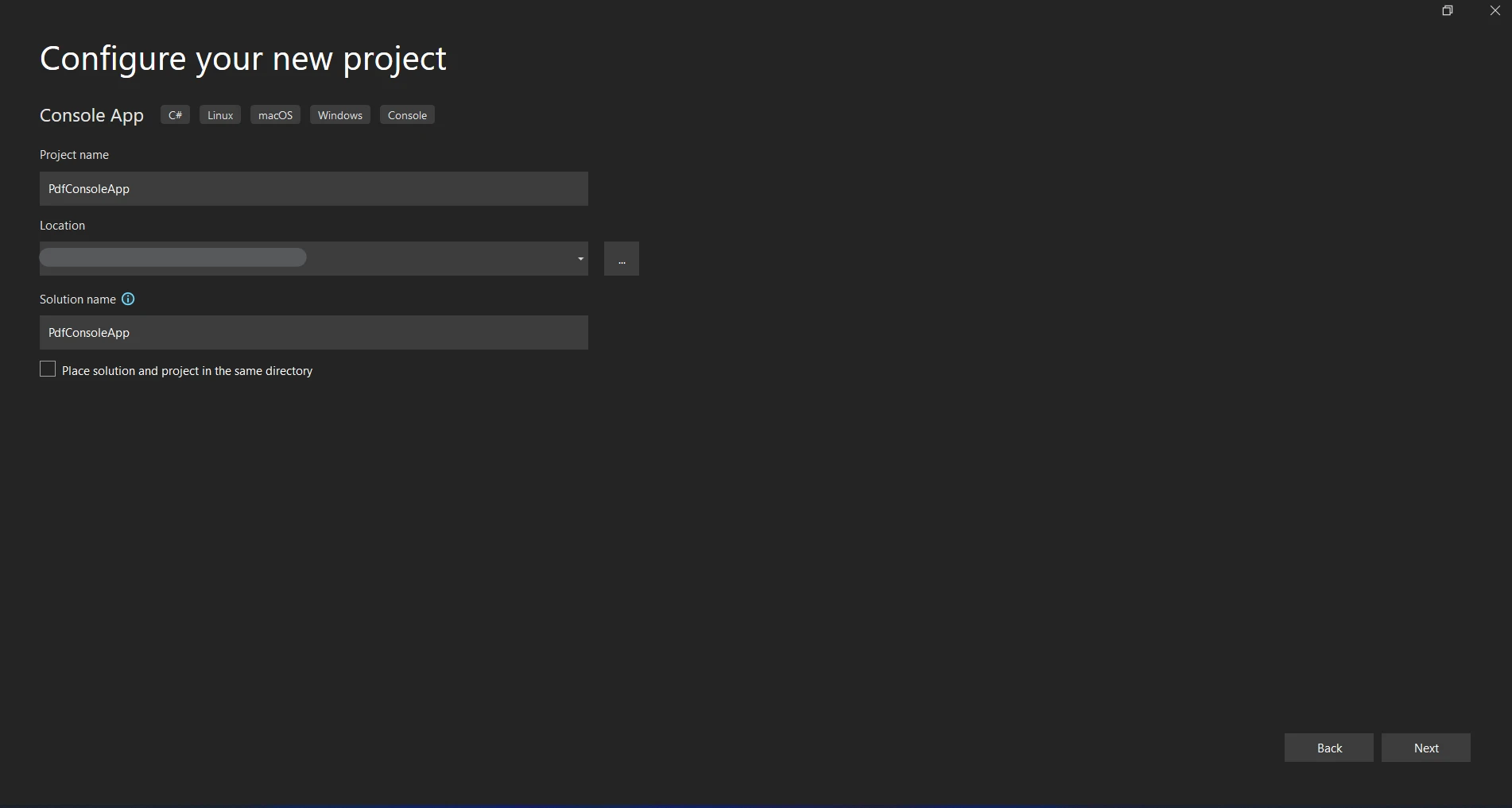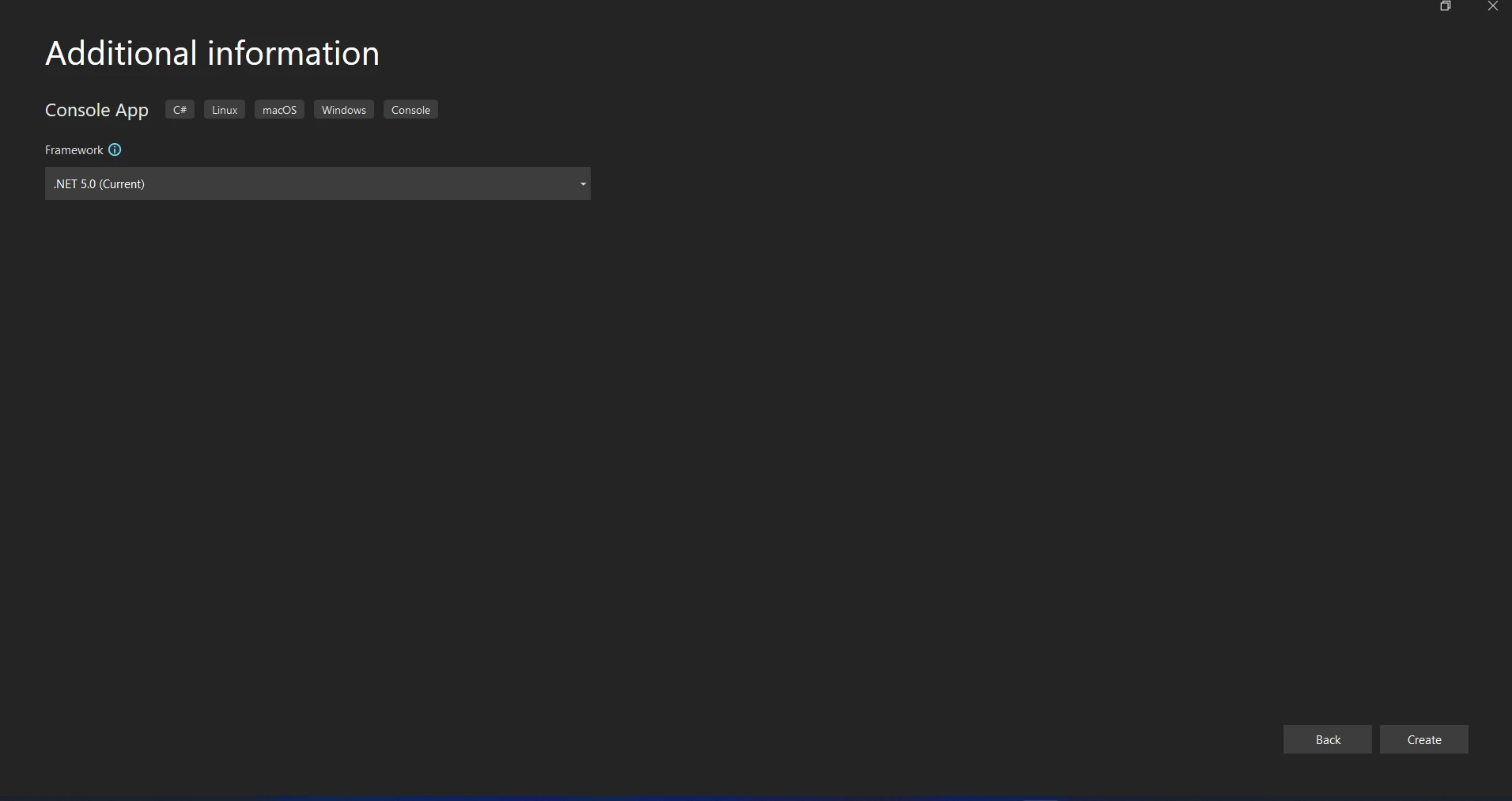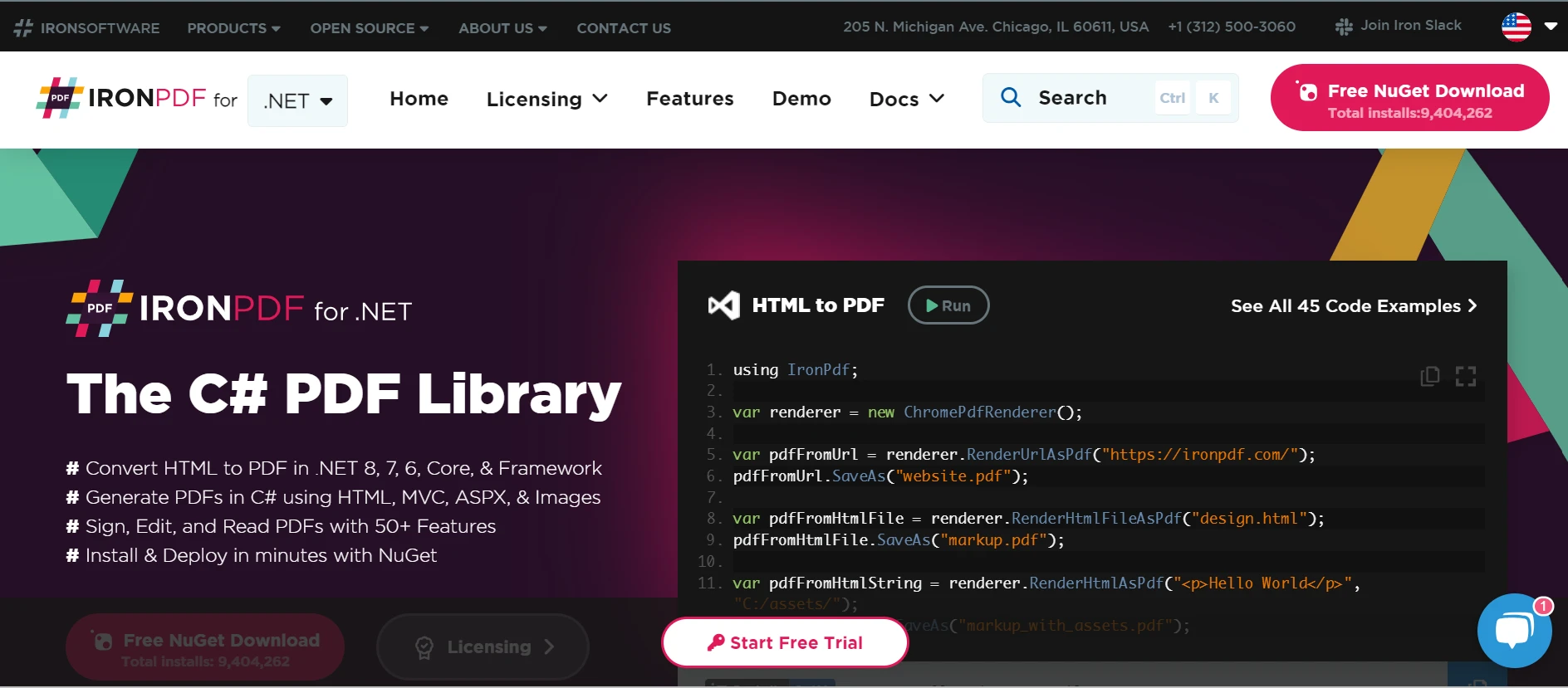Test in production without watermarks.
Works wherever you need it to.
Get 30 days of fully functional product.
Have it up and running in minutes.
Full access to our support engineering team during your product trial
When it comes to C# development, incorporating strong libraries can significantly increase output and capacity. Two such libraries that work well together are Flurl and IronPDF, which give programmers powerful tools for creating PDFs and interacting with online APIs, respectively.
Flurl offers a fluid, expressive syntax that makes working with HTTP requests, APIs, and their API endpoints in C# easier. Sending HTTP requests, responding to them, and managing query parameters or headers are just a few of the chores it simplifies. Developers can manage authentication, serialize and deserialize JSON, and consume web APIs quickly and effectively using Flurl—all while writing legible and well-organized code.
Developers can take advantage of Flurl's ease of use and versatility in conjunction with IronPDF to create detailed and prepared PDF documents by connecting with web APIs, retrieving data, and integrating it into IronPDF with ease. With this integration, programmers may design complex applications that, by automating the creation of documents using real-time data retrieved from online services, improve productivity and user experience.
We'll look at how to use and combine Flurl and IronPDF in a C# program in this introduction, emphasizing their advantages and potential for synergy in modern, contemporary software development.
Flurl is a robust and user-friendly C# library for managing HTTP requests and communicating with online APIs. It provides a fluid, chainable syntax that improves code readability and maintainability and reduces the complexity of interacting with RESTful APIs. Developers can easily create and submit HTTP requests, handle responses in an easy-to-understand manner, and manage query parameters, headers, and payloads with Flurl.
One of Flurl's most notable characteristics is its ability to manage URL building dynamically, which makes it simple to create and alter URLs depending on runtime circumstances, also allowing it to be used as a standalone URL builder. It offers strong support for managing JSON data serialization and deserialization and supports popular HTTP features like GET, POST, PUT, DELETE, etc. Additionally, Flurl has built-in functionality for managing form data and query parameters, which makes it adaptable to a range of API integration scenarios.
The fluent, chainable syntax provided by Flurl enhances program readability and maintainability. Developers can create simple and expressive HTTP requests and work with URLs, query parameters, headers, and payloads.
All standard HTTP methods, including GET, POST, PUT, DELETE, PATCH, HEAD, and OPTIONS, are supported. Developers can accomplish various tasks when working with web APIs thanks to this all-inclusive support approach.
Flurl offers easy ways to modify, add, and remove query parameters within URLs. It makes it easier to create dynamic URLs based on user input or runtime situations.
JSON data handling is supported natively by Flurl. It can easily deserialize JSON responses into C# objects and serialize objects to JSON for request payloads. Because of this, utilizing JSON-based APIs is simple and easy.
It makes managing multipart requests and form data easier. Flurl makes it simple for developers to include multipart/form-data payloads or form-encoded data in HTTP requests.
Flurl offers retry policy definition and error-handling capabilities for all HTTP calls. By defining unique error-handling logic or retry techniques, developers can enhance the resilience and dependability of API calls and interactions. This also safeguards and helps developers prevent anonymous object causing errors in responses.
It supports several popular authentication methods for web APIs, including OAuth, custom authentication schemes, Basic Authentication, and API keys. This ensures secure communication with authentication-required APIs.
By isolating HTTP-related logic into reusable components with a distinct separation of concerns, Flurl encourages testability. This makes writing unit tests for API interactions simpler, as no real network calls are required to test them.
It provides configuration flexibility for HTTP clients and request parameters. Developers can change client behaviors, timeouts, error response amounts, headers, and other settings to meet the needs of particular applications or API limitations.
Because of its framework for plugins, Flurl is very extendable. Developers can increase the platform's functionality by building unique extensions or incorporating third-party plugins for more features.
Here are the following steps to construct and configure Flurl in a C# project:
It's easy to create a console project with Visual Studio. To start a Console Application in the Visual Studio environment, follow these simple steps:
Ensure Visual Studio is installed on your computer before attempting to use it.
Choose File, Project, and then choose the New option.

Either the "Console App" or "Console App (.NET Core)" template can be selected from the list of project template references below.
Please fill out the "Name" form to give your project a name.

Choose a place to keep the project.
Clicking "Create" will open the Console application project.

The first step is to install the Flurl.Http package using the NuGet Package Manager Console or NuGet Package Manager in Visual Studio.
Install-Package Flurl.HttpInstall-Package Flurl.HttpIRON VB CONVERTER ERROR developers@ironsoftware.comFlurl offers the FlurlClient class, which allows you to establish default parameters for every HTTP request that comes using just the URL builder. This optional but helpful step can be accomplished by setting base URLs or default headers.
using Flurl;
using Flurl.Http;
// Configure a FlurlClient instance with base URL and headers
FlurlClient flurlClient = new FlurlClient("https://api.example.com/");
flurlClient.WithHeader("Authorization", "Bearer YourAccessTokenHere");using Flurl;
using Flurl.Http;
// Configure a FlurlClient instance with base URL and headers
FlurlClient flurlClient = new FlurlClient("https://api.example.com/");
flurlClient.WithHeader("Authorization", "Bearer YourAccessTokenHere");IRON VB CONVERTER ERROR developers@ironsoftware.comYou may now make HTTP requests using Flurl's fluent URL.
var response = await "http://localhost:5013/users".GetAsync();
Console.WriteLine(response.ToString());
if (response.ResponseMessage.IsSuccessStatusCode)
{
var result = await response.ResponseMessage.Content.ReadAsStringAsync();
Console.WriteLine(result);
}
else
{
Console.WriteLine($"Error: {response.StatusCode}");
}var response = await "http://localhost:5013/users".GetAsync();
Console.WriteLine(response.ToString());
if (response.ResponseMessage.IsSuccessStatusCode)
{
var result = await response.ResponseMessage.Content.ReadAsStringAsync();
Console.WriteLine(result);
}
else
{
Console.WriteLine($"Error: {response.StatusCode}");
}Dim response = await "http://localhost:5013/users".GetAsync()
Console.WriteLine(response.ToString())
If response.ResponseMessage.IsSuccessStatusCode Then
Dim result = Await response.ResponseMessage.Content.ReadAsStringAsync()
Console.WriteLine(result)
Else
Console.WriteLine($"Error: {response.StatusCode}")
End If
To manage response content based on the intended format (JSON, string, etc.), Flurl's HttpResponseMessageExtensions offers extension methods, such as ReceiveJson and ReceiveString.
// Handling JSON response
var responseObject = await "https://api.example.com/resource"
.WithClient(flurlClient)
.GetJsonAsync<ResponseType>();
// Assuming ResponseType is a class representing the expected JSON structure
Console.WriteLine($"Response: {responseObject.Property}");// Handling JSON response
var responseObject = await "https://api.example.com/resource"
.WithClient(flurlClient)
.GetJsonAsync<ResponseType>();
// Assuming ResponseType is a class representing the expected JSON structure
Console.WriteLine($"Response: {responseObject.Property}");IRON VB CONVERTER ERROR developers@ironsoftware.comQuery parameters: To add query parameters, use the .SetQueryParams() method. Ensure that each request runs using the same HttpClient instance for efficiency.
Timeouts: For example, you can set up timeouts with .WithTimeout(TimeSpan.FromSeconds(30)).
Error Handling: To handle particular error scenarios, use .OnError().
When you need to retrieve data from a remote API and create PDF documents using that data, integrating Flurl with IronPDF in a C# project can be helpful. To get you started with Flurl and IronPDF, follow these steps:
A feature-rich .NET library named IronPDF is available in C# programs to create, read, and modify PDF documents. With the help of this tool, developers can quickly generate print-ready, high-quality PDFs from HTML, CSS, and JavaScript content. Some essential capabilities include the capacity to watermark, make headers and footers, split and combine PDFs, and convert HTML to PDF. IronPDF supports the .NET Framework and .NET Core, making it useful for various applications.
Because PDFs are simple to integrate and have a wealth of detailed documentation, developers may easily employ them in their applications. IronPDF ensures that the generated PDFs closely resemble the source HTML content by efficiently handling complicated layouts and styling.
IronPDF makes it super simple to convert webpages, URLs, and HTML into high-quality PDFs that look exactly like the original content. It’s perfect for creating PDFs of online reports, invoices, and more. If you’ve been looking for a way to turn HTML to PDF, IronPDF has you covered!
using IronPdf;
class Program
{
static void Main(string[] args)
{
var renderer = new ChromePdfRenderer();
// 1. Convert HTML String to PDF
var htmlContent = "<h1>Hello, IronPDF!</h1><p>This is a PDF from an HTML string.</p>";
var pdfFromHtmlString = renderer.RenderHtmlAsPdf(htmlContent);
pdfFromHtmlString.SaveAs("HTMLStringToPDF.pdf");
// 2. Convert HTML File to PDF
var htmlFilePath = "path_to_your_html_file.html"; // Specify the path to your HTML file
var pdfFromHtmlFile = renderer.RenderHtmlFileAsPdf(htmlFilePath);
pdfFromHtmlFile.SaveAs("HTMLFileToPDF.pdf");
// 3. Convert URL to PDF
var url = "http://ironpdf.com"; // Specify the URL
var pdfFromUrl = renderer.RenderUrlAsPdf(url);
pdfFromUrl.SaveAs("URLToPDF.pdf");
}
}using IronPdf;
class Program
{
static void Main(string[] args)
{
var renderer = new ChromePdfRenderer();
// 1. Convert HTML String to PDF
var htmlContent = "<h1>Hello, IronPDF!</h1><p>This is a PDF from an HTML string.</p>";
var pdfFromHtmlString = renderer.RenderHtmlAsPdf(htmlContent);
pdfFromHtmlString.SaveAs("HTMLStringToPDF.pdf");
// 2. Convert HTML File to PDF
var htmlFilePath = "path_to_your_html_file.html"; // Specify the path to your HTML file
var pdfFromHtmlFile = renderer.RenderHtmlFileAsPdf(htmlFilePath);
pdfFromHtmlFile.SaveAs("HTMLFileToPDF.pdf");
// 3. Convert URL to PDF
var url = "http://ironpdf.com"; // Specify the URL
var pdfFromUrl = renderer.RenderUrlAsPdf(url);
pdfFromUrl.SaveAs("URLToPDF.pdf");
}
}Imports IronPdf
Friend Class Program
Shared Sub Main(ByVal args() As String)
Dim renderer = New ChromePdfRenderer()
' 1. Convert HTML String to PDF
Dim htmlContent = "<h1>Hello, IronPDF!</h1><p>This is a PDF from an HTML string.</p>"
Dim pdfFromHtmlString = renderer.RenderHtmlAsPdf(htmlContent)
pdfFromHtmlString.SaveAs("HTMLStringToPDF.pdf")
' 2. Convert HTML File to PDF
Dim htmlFilePath = "path_to_your_html_file.html" ' Specify the path to your HTML file
Dim pdfFromHtmlFile = renderer.RenderHtmlFileAsPdf(htmlFilePath)
pdfFromHtmlFile.SaveAs("HTMLFileToPDF.pdf")
' 3. Convert URL to PDF
Dim url = "http://ironpdf.com" ' Specify the URL
Dim pdfFromUrl = renderer.RenderUrlAsPdf(url)
pdfFromUrl.SaveAs("URLToPDF.pdf")
End Sub
End Class
PDF Generation from HTML
Convert JavaScript, HTML, and CSS to PDF. It supports media queries and responsive design, two contemporary web standards. It is useful for dynamically decorating PDF reports, invoices, and documents with HTML and CSS.
PDF Editing
Text, photos, and other content can be added to preexisting PDFs. Text and pictures can be removed from PDF files. Numerous PDFs can be combined into one file. PDF files can be divided into multiple separate papers. Watermarks, annotations, headers, and footers can be included.
PDF Conversion
Convert several file kinds, including Word, Excel, and picture files, to PDF format. PDF to image conversion (PNG, JPEG, etc.).
Performance and Reliability
High performance and dependability are desired design qualities in industrial settings as they can manage extensive document collections effectively.
To gain the tools you need to work with PDFs in .NET projects, install the IronPDF package.
Install-Package IronPDFInstall-Package IronPDF'INSTANT VB TODO TASK: The following line uses invalid syntax:
'Install-Package IronPDFTo make HTTP queries and get data from your API, use Flurl's fluent API. This is an instance of retrieving JSON data:
using Flurl;
using Flurl.Http;
using IronPdf;
using System;
using System.Threading.Tasks;
class Program
{
static async Task Main(string[] args)
{
try
{
var response = await "http://localhost:5013/users/1".GetJsonAsync<User>();
var id = response?.Id;
var name = response?.Name;
Console.WriteLine($"Data fetched successfully: {name}");
// Generate PDF using IronPDF
var renderer = new HtmlToPdf();
string htmlTemplate = $@"
<html>
<body>
<h1>{id}</h1>
<p>{name}</p>
</body>
</html>";
// Generate PDF document from HTML template
var pdfDocument = renderer.RenderHtmlAsPdf(htmlTemplate);
// Save or stream the PDF document
pdfDocument.SaveAs(@"document.pdf");
Console.WriteLine("PDF document generated successfully.");
}
catch (FlurlHttpException ex)
{
Console.WriteLine($"HTTP Error: {ex.Message}");
}
catch (Exception ex)
{
Console.WriteLine($"Error: {ex.Message}");
}
}
}
// Example model class for JSON deserialization
public class User
{
public int Id { get; set; }
public string Name { get; set; }
}using Flurl;
using Flurl.Http;
using IronPdf;
using System;
using System.Threading.Tasks;
class Program
{
static async Task Main(string[] args)
{
try
{
var response = await "http://localhost:5013/users/1".GetJsonAsync<User>();
var id = response?.Id;
var name = response?.Name;
Console.WriteLine($"Data fetched successfully: {name}");
// Generate PDF using IronPDF
var renderer = new HtmlToPdf();
string htmlTemplate = $@"
<html>
<body>
<h1>{id}</h1>
<p>{name}</p>
</body>
</html>";
// Generate PDF document from HTML template
var pdfDocument = renderer.RenderHtmlAsPdf(htmlTemplate);
// Save or stream the PDF document
pdfDocument.SaveAs(@"document.pdf");
Console.WriteLine("PDF document generated successfully.");
}
catch (FlurlHttpException ex)
{
Console.WriteLine($"HTTP Error: {ex.Message}");
}
catch (Exception ex)
{
Console.WriteLine($"Error: {ex.Message}");
}
}
}
// Example model class for JSON deserialization
public class User
{
public int Id { get; set; }
public string Name { get; set; }
}Imports Flurl
Imports Flurl.Http
Imports IronPdf
Imports System
Imports System.Threading.Tasks
Friend Class Program
Shared Async Function Main(ByVal args() As String) As Task
Try
Dim response = await "http://localhost:5013/users/1".GetJsonAsync(Of User)()
Dim id = response?.Id
Dim name = response?.Name
Console.WriteLine($"Data fetched successfully: {name}")
' Generate PDF using IronPDF
Dim renderer = New HtmlToPdf()
Dim htmlTemplate As String = $"
<html>
<body>
<h1>{id}</h1>
<p>{name}</p>
</body>
</html>"
' Generate PDF document from HTML template
Dim pdfDocument = renderer.RenderHtmlAsPdf(htmlTemplate)
' Save or stream the PDF document
pdfDocument.SaveAs("document.pdf")
Console.WriteLine("PDF document generated successfully.")
Catch ex As FlurlHttpException
Console.WriteLine($"HTTP Error: {ex.Message}")
Catch ex As Exception
Console.WriteLine($"Error: {ex.Message}")
End Try
End Function
End Class
' Example model class for JSON deserialization
Public Class User
Public Property Id() As Integer
Public Property Name() As String
End ClassUsing Flurl's .GetJsonAsync() function, the example sends a GET request. Replace "User" with your model class, which represents the API response structure, and "URL" with your actual API endpoint. An HTML template (htmlTemplate) can be rendered into a PDF document (pdfDocument) using IronPDF's HtmlToPdf class. In this example, the title and body data retrieved from the API are used to construct the HTML template dynamically. On the file system, the created PDF document (pdfDocument) is saved to the given place ("document.pdf"). To get where you want to go, change the path.

Provide robust error handling for problems like network faults (FlurlHttpException) or general exceptions (Exception) during data fetching or PDF production. You can change the page size, margins, headers, footers, and other PDF settings using IronPDF. For more advanced customization possibilities, see IronPDF's manner manual. When sending HTTP queries to APIs, ensure sensitive data and access tokens are handled securely. Use the proper authentication methods that your API requires.
In summary, combining IronPDF for PDF generation with Flurl for API interaction in a C# application offers a potent combination for dynamically retrieving data and producing high-quality PDF documents. With its fluid API, the Flurl library streamlines HTTP requests and provides flexibility and user-friendliness when retrieving data from distant endpoints. In addition, IronPDF facilitates the easy translation of HTML material into PDF format, offering adjustable features such as headers, margins, and page size.
When implementing this integration, it's also important to consider speed optimization, data security, and error handling. By following best practices and utilizing the advantages of both Flurl and IronPDF, developers may create dependable and scalable solutions that successfully satisfy the requirements of contemporary apps.
IronPDF and Iron Software's Suite offers additional online apps and capabilities and more efficient development by combining Iron Software's highly flexible systems and suite with its core support.
If license alternatives are clear and specific to the project's needs, developers are better able to determine which model is ideal and best practice. These benefits allow developers to manage a range of issues in a clear, compelling, and effortlessly integrated way.